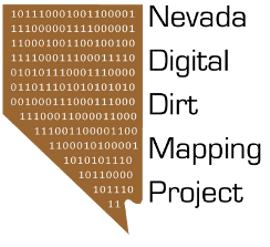Over the past several weeks, I have initiated a major expansion of the Dirt Mapping Team. Completing such a large map by the beginning of May (!) is a mammoth undertaking. As the previous post indicates, we have made significant progress, but it has become clear that the active mapping team was too small (essentially, two of us). The increase in membership has been greatly facilitated through direct cooperation with the affiliated ecosystem mapping and GIS team from the UNR G-lab, and from some 'hand-picked' UNR geology students and profs with skills in mapping and GIS.
Thus, we now have up to 11 contributors performing at various levels and time commitments. Currently, our main tasks are improving existing linework from compiled map sources and dealing with mapped units that are below our minimum map unit threshold. The first step in the linework improvement phase is modification/reshaping of the contact between bedrock units and surficial units. This turns out to be the easiest step for new 'recruits' to understand and master. The process is greatly enhanced by including multiple imagery types and shaded relief models as base layers which allow for different, yet complementary perspectives on the landscape. Also, running Google Earth in an adjacent monitor is also quite handy. Oh right...the G-Lab also got some sweet new Wacom digitizing tablets as well.
We are using versioned geodatabases in ArcSDE. to allow for independent and concurrent editing among all of us. This is the best scenario for a multi-mapper effort. Thanks to Abbey for managing the whole affair.
The ideal trajectory of mapping participation is as follows:
1. Contact between bedrock and surficial deposits (currently underway)
2. Contact between different master classes of surficial deposits (e.g., alluvial fans from playas, etc.)
3. Contact within master classes of surficial deposits (e.g., alluvial fan deposits of different ages)
Progression through these steps will depend in large part on performance and time available to map. Most team members have been assigned a 15' by 15' (minutes of lat and long) cell in which to work on the bedrock contact. They are tracking their time. Every cell will be evaluated for consistency and accuracy by the team leaders.
To date, I have spent several hours providing tutorials about the most efficient ways to carry out the bedrock / non-bedrock contact and will spend some more time this week to make sure everyone is up to speed. Also, several times in the last few months I have been able to provide some instuction / explanation in the field about the nature of the deposits we are mapping.
Monday, February 22, 2010
Monday, February 8, 2010
Generalized map of surficial and bedrock units as of February 2010
The Clark County dirt mapping team will soon expand from 4 to 7 or 8 as we approach a key deadline. The morass of linework remains a major issue, but we are slowly refining it into a clean data set. Here, I thought I would take a step back and evaluate the map on a more fundamental level...that of key mappable unit types. Much of this map reflects the original data sources that we are refining, but it provides a very nice overview of the distribution of the key map unit types in the county. The deposits are not divided by age in this rendition...just process / deposit type.
As the full team begins to take on the county en masse, I will post updates of this particular representation as it evolves.
Subscribe to:
Posts (Atom)

